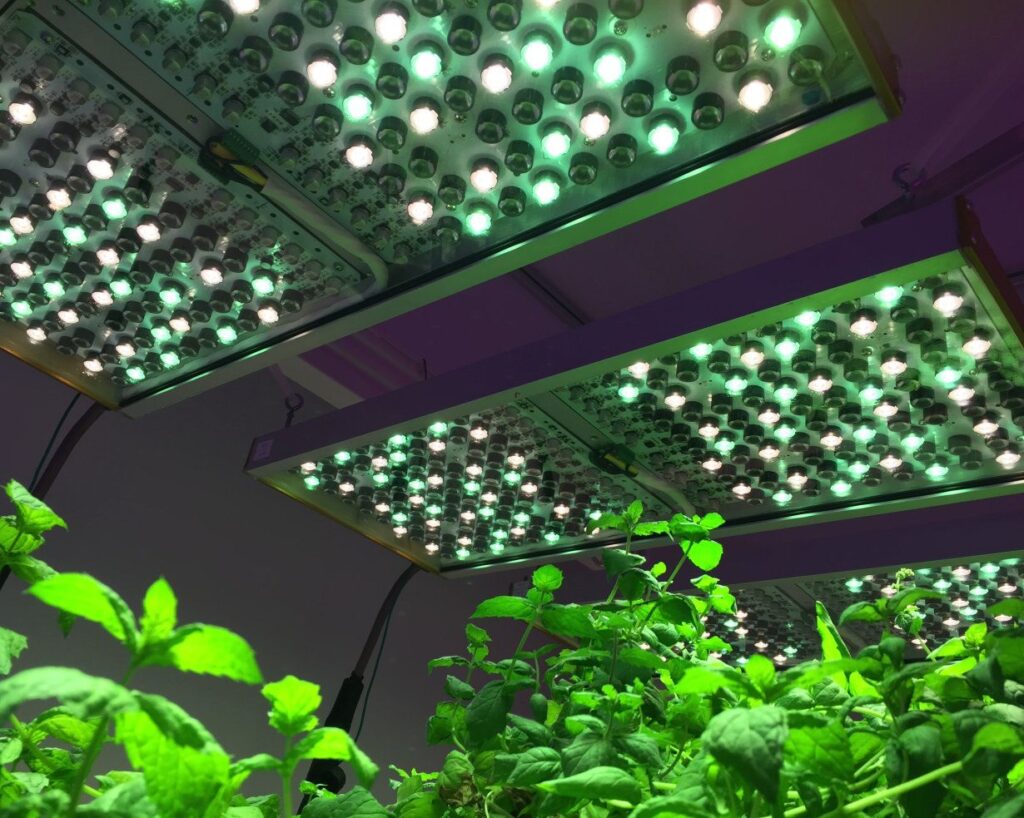Are you planning on getting new grow lights to supplement your plant growth? You may know about how there are different UV rays to use on plants, but what about colors? There are three main types of colors on lights, which are red, blue, and green.
And because plants are green, one may presume that they need more green light. More specifically, one may even wonder, what would happen if a plant only receives green light? Read on to find out and see if green light is beneficial or disadvantageous for your plants.

What Is Green Light?
For starters, what is green light for plant growth anyway?
Green light would be defined as radiation with wavelengths ranging between 500-600 nm. Green light within photosynthetically active wavebands is between 400-700 nm.
As mentioned, there are other kinds of lights, which as blue (400-500 nm) and red (600-700 nm). Compared to those two kinds of light colors, the effects on the green lights’ plant growth aren’t as well understood. We would often find red and blue light mostly for LED fixtures made for plant growth applications.
So, why are plant leaves green, then? While leaves reflect more green light compared to other visible wavelengths, only around 5-10% of green light is reflected, with the rest absorbed or transmitted through leaves. Light transmitted from one leaf is available to leaves below it, so photons are useful in plants.
There have been other benefits green light provides to plants as well, though more studies need to be shown, especially when it comes to using green light on certain plant varieties.
Such benefits include:
- An experiment performed by the Michigan State University shows that substituting red light for green light reduced the extension growth of seedlings, resulting in slightly smaller leaves and shorter stems. With higher proportions of green, some experiments show that green light may promote extension growth
- Flowering of plants with photoperiodic flowering response would be regulated by two pigments, which are the phytochrome and cryptochrome. These pigments would absorb green light, though a smaller degree. With this in mind, a green light may help in regulating flowering in long-day plants.
- Green light can penetrate deeper into leaves compared to blue or red lights. This can help with photosynthesis, showing green light can be useful under high-light intensities.
- Green light isn’t only beneficial to plants, but people as well. It can help reduce eye strain in humans.
What Would Happen If a Plant Only Receives Green Light?
With all this in mind, there are experts who say that you shouldn’t only use green light for your plants. You may have already heard it from other gardeners as well- Greenlight isn’t useful for plants or photosynthesis at all!
In fact, while beneficial based on studies above, the green light was shown to be the least effective during plants’ growing processes as they may be deflected by certain species. This is why green light can actually be detrimental to the growth of other plants if you do not accompany it with the right amounts of other colors.
Plant development, especially when they are still seedlings, would actually be harmed from the green light. It has been found that green light may reverse stem growth in specific plant varieties. So while green light won’t cause plants to die directly, it would have detrimental effects due to lack of photosynthesis.
Red and blue lights are actually the ones producing the energy required for photosynthesis, along with plant growth and development. But why red and blue?
This is because red and blue LEDs are much more efficient compared to green LEDs when it comes to converting electricity to photos. Also, red and blue photos are most effective when stimulating photosynthesis on the instantaneous single-leaf basis.
So while you may want to consider using green light with your plants for the positive effects it has to plant growth, be sure that you also expose it to the right amounts of red and blue lights. If not, then you may end up reaping more disadvantages than benefits. If you are unsure of whether or not your plant variety will benefit from the green light, then it’s best to ask experts or to avoid using it first.
Again, more studies need to be shown about both the advantages and disadvantages of green light to plants. But to be safe, never use the green light on its own.
Do you want to learn more about green lights on plants? Check out this interesting video on grow lights and why plants are green:
Wrapping It Up
When it comes to growing plants, especially indoors, you need to be wary about the light you provide for them. Not only the UV rays’ matter, but the color and wavelengths as well, which can make or break the way your plants grow and go through photosynthesis. If you plan to give the green light, you should not give this color alone, but match it with appropriate amounts of red and blue lights as well.
I hope that this article answered your question, “what would happen if a plant only received green light?” Now that you know the answer, do learn more about the types of nutrients and requirements specific plant varieties need for optimum growth.